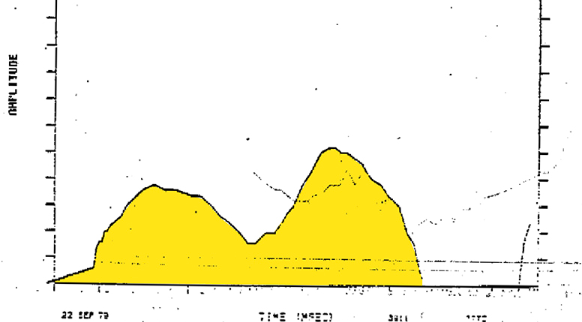
Foreign Policy magazine has brilliantly unpacked a story relevant to the ongoing confrontation between Iran and the United States. It’s a revealing story of how intelligence findings are manipulated for political ends. It’s a tale of why the United States has no credibility on the issue of nuclear proliferation in the Middle East. It’s what they call the “Vela Incident.”
The Issue
The Trump administration insists on two points: 1) that Iran not be allowed to obtain nuclear weapons; and 2) that the Joint Comprehensive Plan of Action, adopted by Iran and the international community in 2015, which delayed Iran’s path to the bomb by a decade, is not sufficient.
In contrast to Trump’s high standards, stands the practice of the U.S. government. When the American scientists picked up data indicating a nuclear explosion in a remote part of the South Atlantic 40 years ago, the Carter administration suppressed the scientific evidence that Israel was responsible. The U.S. government, as a matter of policy, adopted the far-fetched claim that the scientific data indicating an extraordinary pulse of energy from the South Atlantic was a merely a reporting error, a false positive.
After reexamining the evidence for Foreign Policy, scientists Lars-Erik De Geer and Christopher Wright say that U.S government’s claim about the events of September 22, 1979 is “essentially impossible.”
Two leading scholars of the Israeli nuclear program, Avner Cohen and William Burr, weigh in with the observation that “Politicians May Lie But the Archives Don’t. “
“The accretion of information, direct and circumstantial, ” they write, “makes the case for an Israeli nuclear detonation on Sept. 22, 1979, look more respectable than ever.”
Back Story
Israel obtained nuclear weapons in 1967-68, with fissile material stolen from the Nuclear Material and Equipment Corporation (NUMEC), a nuclear processing plant in Apollo, Pennsylvania. The “diversion” of enriched uranium was orchestrated by Rafi Eitan, a legendary Mossad operative who died earlier this year.

While U.S. law enforcement did not charge anyone with theft of the missing uranium, CIA scientists had little doubt that Mossad was behind it, as I reported in The Ghost, my 2017 biography of CIA counterintelligence chief James Angleton.
“I believe that all of my senior analysts who worked on the problem agreed with me fully,” said Carl Duckett, deputy director for technical and nuclear intelligence, in 1976. “…the clear consensus in the CIA was that indeed NUMEC material had been diverted and had been used by the Israelis in fabricating weapons.”
While the Israelis were confident they had mastered the technology of nuclear weapons, they had never tested one the weapons–until September 1979.
The scientific evidence of a nuclear blast, collected by a U.S. surveillance satellite called Vela, presented a political challenge to the Carter administration. Already buffeted by high inflation and unemployment, the first-term Democratic president faced a string of foreign policy crises in 1979, starting with the overthrow of the pro-American Shah of Iran. The “Vela incident,” as the blast was dubbed, was an unwelcome development.
An illicit nuclear test by Israel had domestic and geopolitical implications that Carter wanted to avoid. The Israeli test, conducted with the help of South Africa, violated the 1963 partial test ban treaty, signed by Israel, which forbids nuclear tests in the atmosphere, underwater, and in outer space. In additional U.S. law required sanctions on any nation, other than the nuclear states authorized by the Nuclear Non-Proliferation Treaty, that detonated a nuclear explosive after 1977.
The Carter White House appointed a scientific panel, headed by MIT scientist Jack Ruina, which seized on the inevitable uncertainties in the data to exculpate Israel.
U.S. intelligence agencies did not agree. The CIA, the Naval Research Laboratory and the Defense Intelligence Agency all concluded the evidence pointed to Israel.
According to Jack Varona, a senior Defense Intelligence Agency official, hydroacoustic data analyzed by the U.S. Naval Research Laboratory strongly indicated signals that were “unique to nuclear shots in a maritime environment.” The source of the signals was the area of “shallow waters between Prince Edward and Marion Islands.” The Naval Research Laboratory report is still unavailable, but a declassified State Department memorandum included Varona’s statements, including his view that the Ruina report was a “white-wash, due to political considerations.”
The Legacy
The Israeli test and the U.S. coverup had consequences that shape the Middle East today. Instead of being held accountable for violations of the NPT and the U.S. law, Israel benefitted from the cover story.
Israel’s nuclear program went on to acquire weapons deliverable by land, sea, and air, with the means of delivery provided by French-designed missiles, German submarines, and American airplanes. If anything, Israel’s nuclear weaponry gained a stronger political position vis-à-vis the United States.
Israel now argues that Iran should be forced to submit to the
A Spy’s Notes
Foreign Policy also interviewed Dieter Gerhardt, a senior South African military officer who was, unbeknownst to his government, working as a spy for the Soviet Union. In 1979, he was the commander of a naval base on the South African coast, not far from where the Vela incident occurred.
Gerhart believes the test was a collaboration between South Africa, which was then seeking nuclear capabilities, and Israel. He told Foreign Policy.
It is entirely possible for Israel to have conducted the test on its own without South African direct participation other than giving the go-ahead for the test to be carried out in the region and giving normal ship support such as fuel, water, and vittles. I do believe, however, that this was a joint project from which South Africa’s own nuclear program would have benefited
The question today, says Henry Sokolski, executive director of the Nonproliferation Policy Education Center, is:
is whether the the U.S. government might finally share what it knows about the event. This would seem to make sense, as it would help discourage future violations of pledges not to test by countries such as Iran, Saudi Arabia, Egypt, Turkey, South Korea, Japan, and other aspirational nuclear states.
But since the Vela incident involves Israel, he notes, the U.S. government is not likely to come clean and the international efforts to curb and eliminate nuclear weapons will be undermined.


